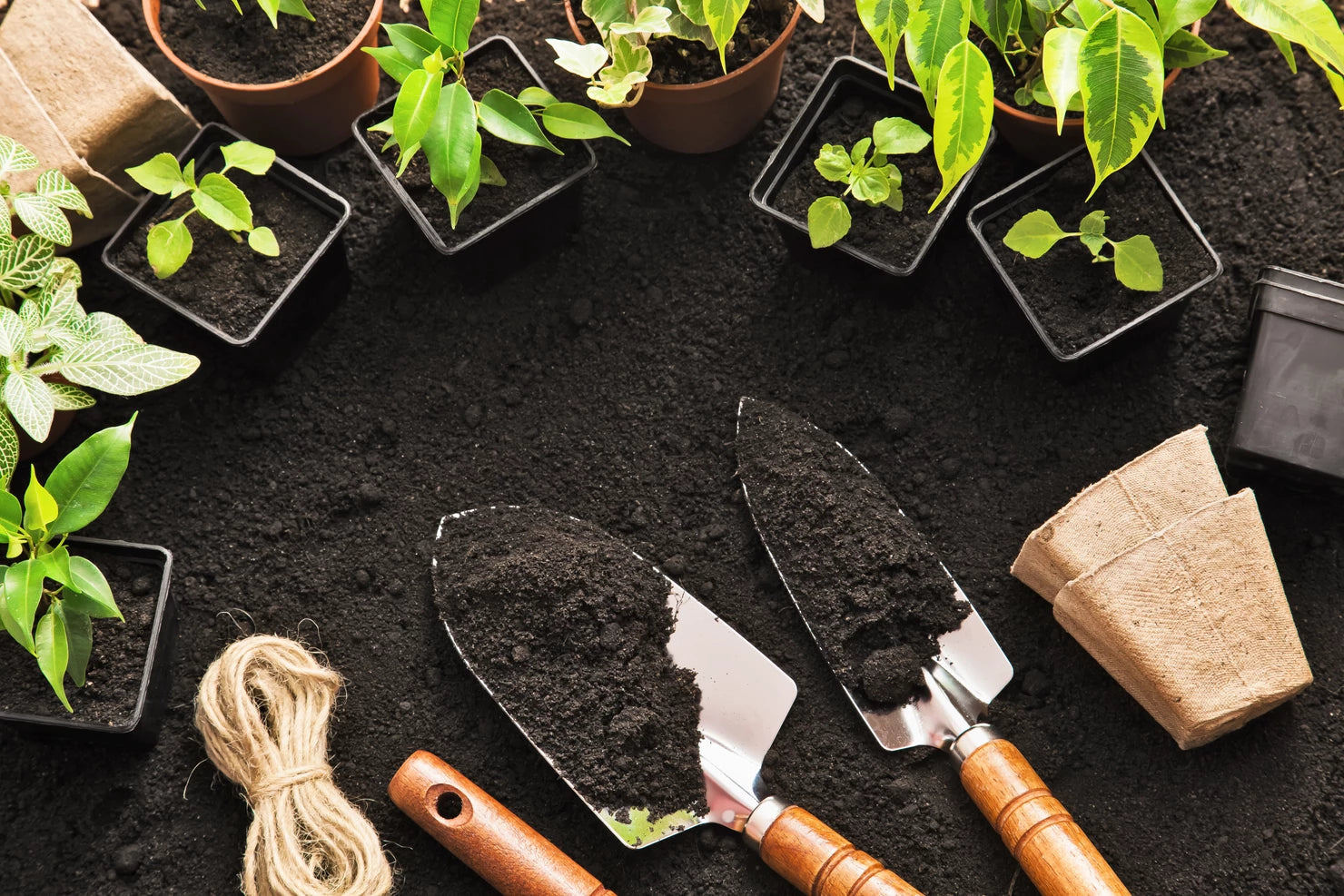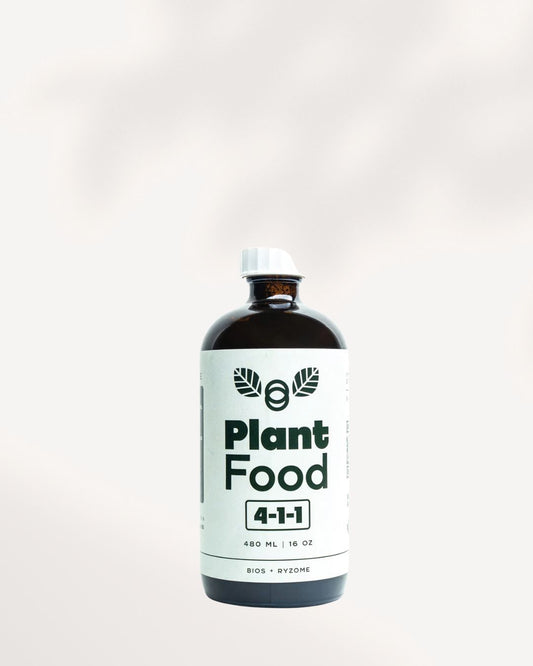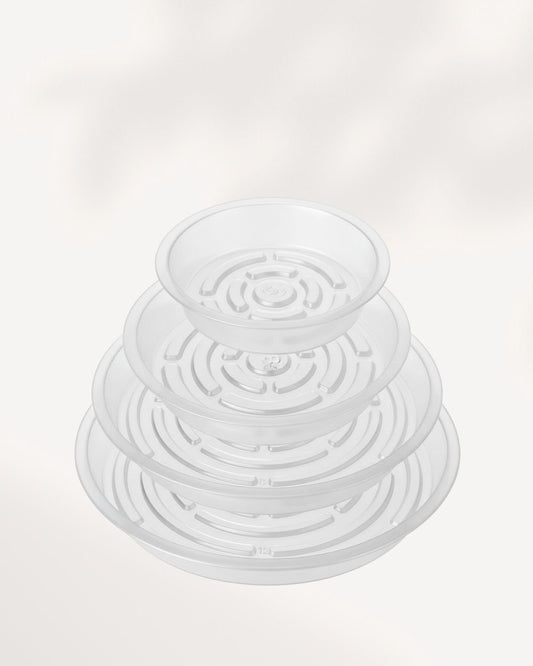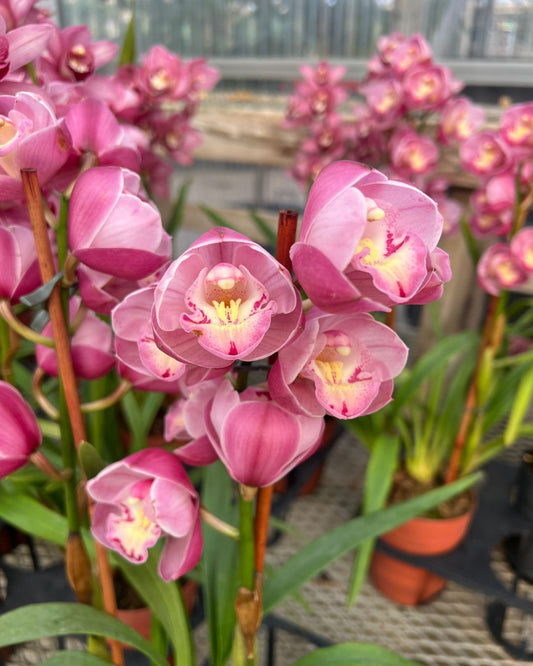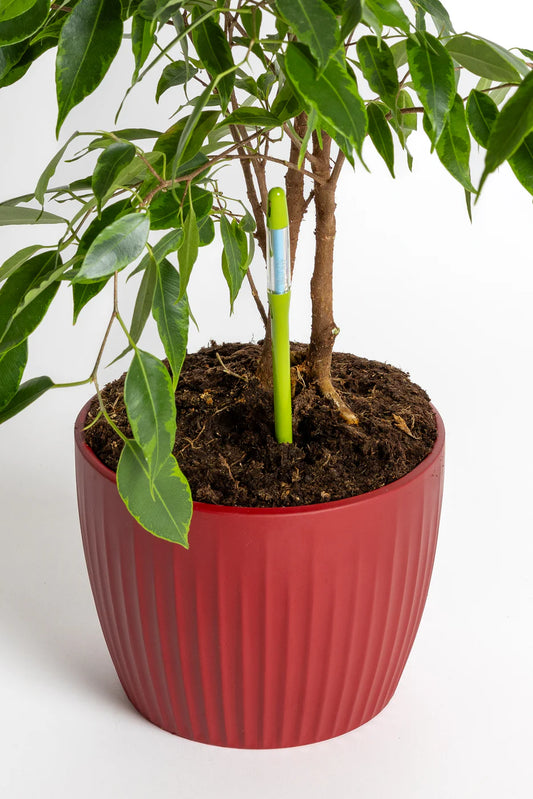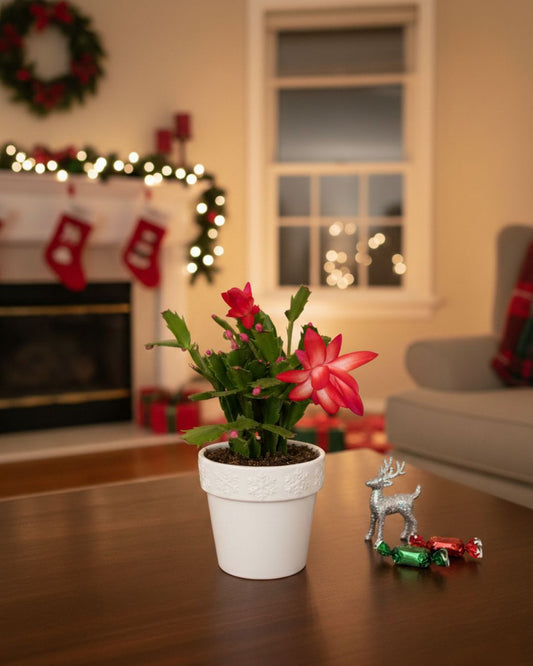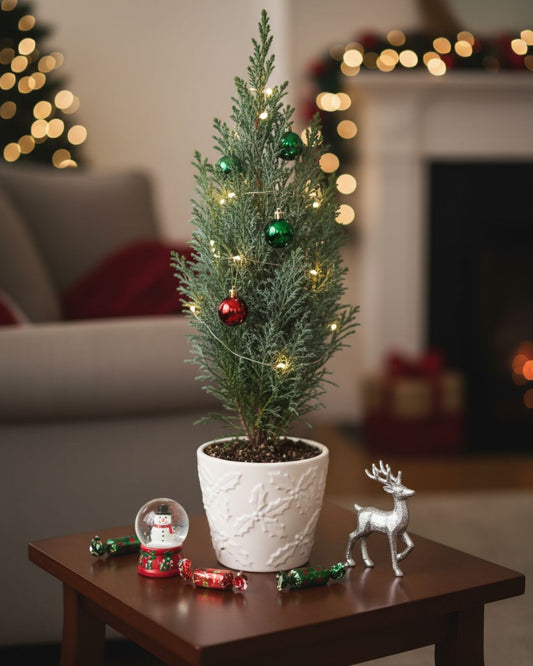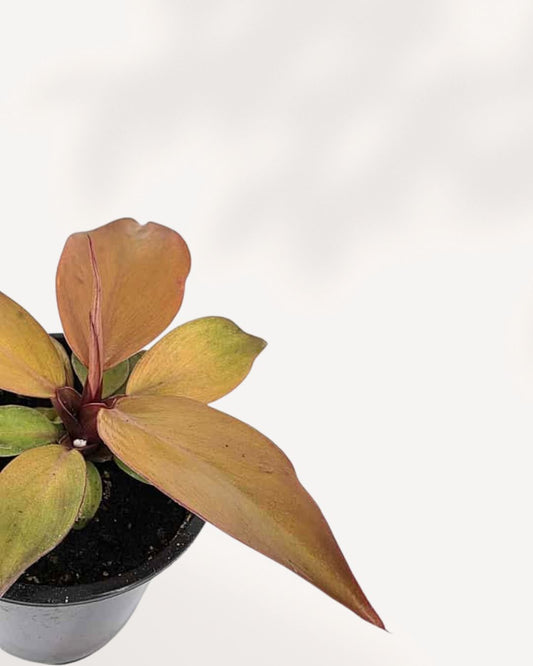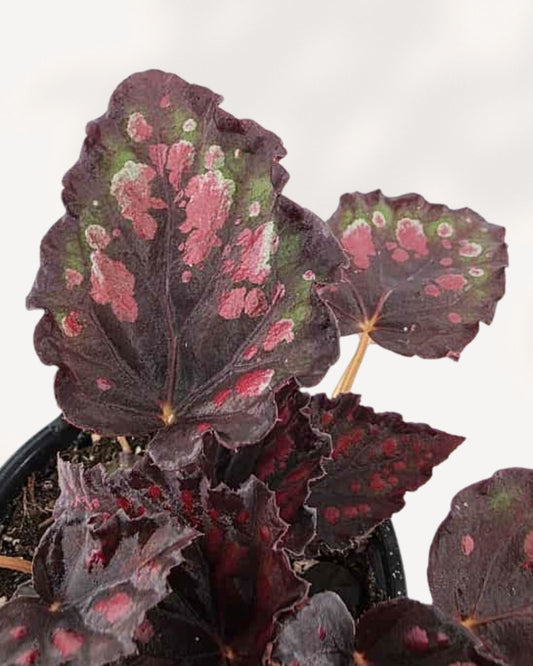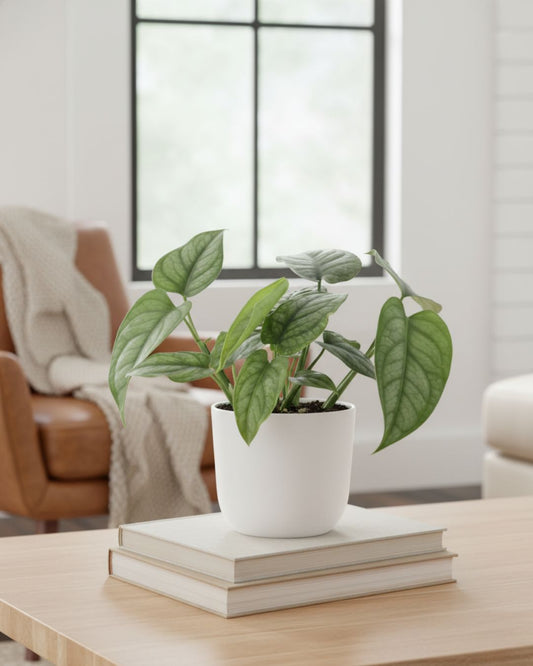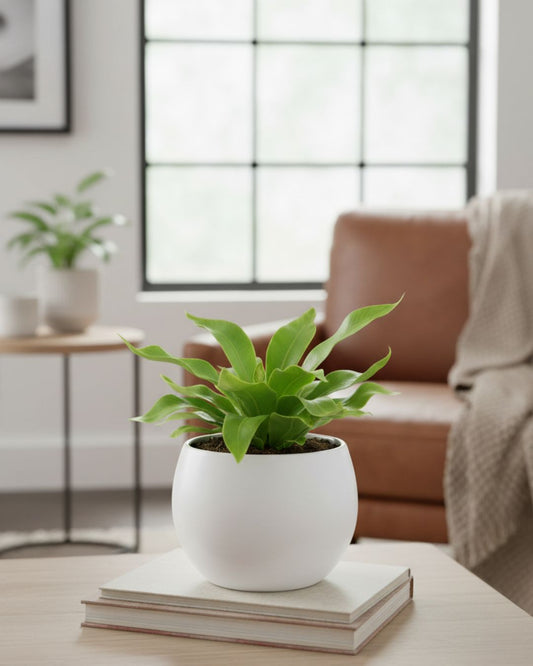Madagascar Palm Plant Care: Easy Tips for Beginners
Are you searching for the best care tips for your Madagascar Palm Plant? Congrats! You’re at the right place.
Let me tell you in advance that the Madagascar Palm Plant is not a true palm, but it looks like one! With its thick, spiny trunk and lush green leaves, this unique succulent adds an exotic touch to any space.
Whether you keep it indoors or outdoors, this hardy plant can adapt well to the right conditions. In this guide, we’ll let you understand about its basic needs that helps in keeping it healthy and thriving.
Let’s discover how to care for your Madagascar Palm the right way!
Madagascar Palm Plant Care
- Light: Needs full sun (at least 6 hours daily) for healthy growth.
- Watering: Water only when the soil is completely dry to prevent root rot.
- Soil: Use well-draining, sandy soil (cactus/succulent mix preferred).
- Temperature: Thrives in warm temperatures (65-85°F / 18-29°C).
- Fertilizer: Feed monthly in spring and summer with a balanced cactus fertilizer.
- Pruning: Minimal pruning needed, only remove dead leaves or spent flowers.
- Potting: Use a pot with drainage holes to avoid water retention.
For even better results, explore our range of pots and planters that help prevent waterlogging.
Part 1: How to Take Care of the Madagascar Palm Plant?
Caring for your Madagascar Palm (Pachypodium lamerei) is surprisingly simple. Think of it as a sun-loving succulent with a dramatic flair. You can be well on your way to enjoying this unique plant for years to come by understanding its basic needs, like
- Plenty of light
- Well-drained soil
- Infrequent watering

Let's explore the specifics of Madagascar Palm care to ensure your plant flourishment.
Overview of Madagascar Palm Plant
Here’s a quick look at what makes the Madagascar Palm Plant so unique.
| Characteristic | Details |
|---|---|
| Common Name | Madagascar Palm |
| Botanical Name | Pachypodium lamerei |
| Family | Apocynaceae |
| Plant Type | Succulent Shrub/Small Tree |
| Mature Size | Up to 15 ft (4.5 m), occasionally to 20 ft (6 m) outdoors; much smaller indoors |
| Sun Exposure | Full sun (at least 6 hours) |
| Soil Type | Well-draining, sandy or rocky soil |
| Soil pH | Slightly acidic to neutral (6.0-7.0) |
| Bloom Time | Spring and Summer |
| Flower Color | White with a yellow center |
| Hardiness Zones | USDA Zones 9-11 (tolerates some light frost once established) |
| Native Area | Madagascar |
Care Tips
Let’s discover the important tips required for the good care of Madagascar Palm Plant.
Light:
Madagascar Palms crave sunlight. Place them in a spot that receives at least 6 hours of direct sun daily. A south-facing window is ideal. Insufficient light can lead to weak growth and fewer blooms.
Pro Tip: Rotate your plant regularly to ensure even light exposure. Also, prevent it from leaning towards the light source. Remember, Madagascar palms are the opposite of low light plants.
Watering:
Water deeply when the soil is completely dry. Overwatering is the biggest threat. Allow the soil to dry out between waterings to prevent root rot. During the winter, reduce watering significantly.
Pro Tip: Use a moisture meter to check soil dryness before watering.
Soil:
Use well-draining, sandy soil to prevent root rot. A cactus or succulent mix is ideal. Enhance drainage by adding perlite or coarse sand. Ensure the pot has drainage holes to allow excess water to escape.
Ensure thriving indoor plants with proven soil and fertilizer combinations.
Temperature and Humidity:
Madagascar Palms thrive in warm temperatures between 65°F and 85°F (18°C to 29°C). They prefer low humidity but can adapt to moderate levels. Protect the plant from drafts and sudden temperature changes, as these can cause stress and leaf drop.
Fertilizer:
During the growing season (spring and summer), feed your Madagascar Palm monthly with a fertilizer formulated for cacti or succulents. Dilute the fertilizer to half the recommended strength to avoid overfeeding, which can harm the plant.
A deeper look into indoor plant fertilizer can help clarify the right mix for seasonal feeding.
Pruning:
Minimal pruning is required. Remove dead or damaged leaves and spent flowers to maintain the plant's appearance and health. Use clean, sharp pruning shears to make precise cuts.
To prevent overwatering, use a moisture meter to check soil dryness before watering. It helps you know exactly when your plant needs water.
To simplify watering care, consider using a moisture meter for accurate soil readings and healthier plant habits.
Part 2: How to Propagate Madagascar Palm Plant?
Propagating a Madagascar Palm allows you to expand your plant collection or share this striking succulent with friends. While it requires a bit of patience, the process is straightforward. Here's a step-by-step guide.
Step-by-Step Guide:
Follow the guide below to propagate pachypodium madagascar palm trees.
Step 1. Take a Cutting
Select a healthy stem section from your Madagascar Palm. Using a clean, sharp knife or pruning shears, carefully cut a piece that is at least 3-4 inches long.

Step 2. Let it Callous
Allow the cut end of the stem to dry and form a callous. This prevents rot when you plant the cutting. Leave it in a dry, warm place for a few days until you see a hardened, calloused area form.

Step 3. Plant in Soil
Use a fast-draining soil mix, similar to what succulents need. A mix of cactus soil with added sand or perlite works best. Avoid regular garden soil, as it retains too much moisture and can cause rot.
Pro Tip: To improve drainage, mix 60% cactus soil with 40% perlite or sand.
Step 4. Water Lightly
Lightly mist the soil after planting, but do not soak it. The cutting has no roots yet, so too much water can cause rot. Wait a few days before watering again, then keep the soil lightly moist but never wet.
Pro Tip: A spray bottle works best to control moisture levels without overwatering.
Step 5. Provide Light
Place the pot in a warm spot with bright, indirect sunlight. Avoid direct sun at this stage, as it can dehydrate the cutting before roots develop. Keep the temperature between 70-85°F (21-29°C) for optimal growth.
Pro Tip: If natural light is limited, use a grow light to support healthy rooting.
Potting and Repotting Madagascar Palm Plant
Here’s a quick side-by-side look at how to properly pot and repot your Madagascar Palm.
| Aspect | Potting | Repotting |
|---|---|---|
| Soil | Use well-draining, sandy soil with added perlite. | Refresh the soil mix to maintain good drainage. |
| Pot Selection | Choose a pot with drainage holes to prevent waterlogging. | Use a slightly larger pot to allow root expansion. |
| Timing | It's best done in spring or early summer. | Repot every 2–3 years or when roots outgrow the pot. |
| Method | Place the plant in the pot, backfill it with soil, and water lightly. | Remove the plant, shake off excess soil, and replant with fresh mix. |
| Aftercare | Avoid overwatering and place in bright, indirect sunlight. | Minimize watering for a week to allow roots to settle. |
Pro Tip:
Using planters with drainage holes is the best way to prevent water from sitting at the roots. This helps avoid root rot and keeps your plant healthy.
Choose from our curated collection of Pots & Planters to ensure proper drainage and support the healthy growth of your Madagascar Palm.
Part 3: What are the Common Problems of the Madagascar Palm Plant?
The Madagascar Palm Plant (Pachypodium lamerei) is a hardy succulent, but it can face several issues when not given proper care. Most problems arise from incorrect watering, inadequate light, or environmental stress.
Below are some common problems, their causes, and solutions to keep your plant healthy.
Issue 1- Yellowing Leaves
Causes:
- Overwatering, leading to root rot.
- Insufficient sunlight.
- Natural shedding of old leaves (normal process).
Solution:
- Reduce watering and allow the soil to dry between waterings.
- Ensure the plant receives full sun for at least 6 hours daily.
- If the older leaves at the bottom turn yellow and drop, it is natural and not a concern.
Using the right potting soil can prevent common leaf issues. Explore our soil & fertilizer collection for reliable options.
Issue 2- Soft or Mushy Stem
Causes:
- Root rot due to poor drainage or excessive watering.
- Fungal infections from prolonged moisture exposure.
- Solution:
- Check for root rot by gently removing the plant from its pot. If roots are black and mushy, trim the affected areas.
- Repot the plant in dry, well-draining soil and use a pot with drainage holes.
- Water sparingly, only when the top few inches of soil are dry.
- Use distilled water to prevent mineral buildup.
For more insights on why distilled water benefits sensitive plants like this, see our complete guide on water quality.
Issue 3- Leaf Drop
Causes:
- Sudden temperature changes or cold drafts.
- Underwatering or prolonged drought conditions.
- Shock from repotting or relocation.
Solution:
- Keep the plant in a stable environment, avoiding temperature drops below 50°F (10°C).
- Maintain a consistent watering schedule, ensuring the soil does not completely dry out for extended periods.
- If repotting, handle the plant gently and allow it time to adjust to its new container.
Issue 4- Brown or Black Spots on Leaves
Causes:
- Fungal infections due to high humidity.
- Overwatering leads to bacterial issues.
- Sunburn from sudden exposure to intense sunlight.
Solution:
- Improve air circulation around the plant and avoid misting.
- Remove affected leaves and apply a fungicide if necessary.
- Gradually acclimate the plant to direct sunlight instead of abrupt exposure.
Issue 5- Stunted Growth
Causes:
- Lack of adequate sunlight.
- Poor soil quality lacking nutrients.
- Root-bound conditions from not repotting on time.
Solution:
- Ensure the plant gets full sun daily.
- Fertilize lightly during the growing season (spring and summer) with a balanced cactus fertilizer once a month.
- Repot every 2–3 years if the roots have outgrown the container.
Conclusion
The Madagascar Palm Plant is a beautiful and low-maintenance succulent. It thrives in bright sunlight, well-draining soil, and occasional watering. With proper care, it can grow into a stunning indoor or outdoor plant.
Want to expand your plant collection? Try propagating a new Madagascar Palm from cuttings! With patience and the right steps, you can grow more of these unique plants.
Looking for more greenery that’s safe for your pets? Explore our collection of pet-friendly indoor plants.
Frequently Asked Questions
Q1. Why are the leaves of my Madagascar Palm turning yellow?
Yellow leaves can happen due to overwatering or low sunlight. Must let the soil dry fully before watering again and then place the plant in a sunny spot. Some yellowing of old leaves is normal and not a big problem.
Q2. How often should I water my Madagascar Palm?
You have water your plant only when the soil is completely dry. In summer, it may need more water whereas in winter, less water is required. Use your finger to check the top inch of soil. If it’s dry, it’s time to water.
Q3. Does the Madagascar Palm need direct sunlight?
Yes, absolutely! Madagascar Palms are sun worshippers. They thrive in full sun and need at least 6 hours of direct sunlight per day to grow strong and healthy. A south-facing window is an ideal location.
Q4. How do I prevent root rot in my Madagascar Palm?
Use well-draining soil and a pot with drainage holes. Only water when the soil is dry and never let water sit at the bottom. This keeps the roots safe and healthy.
Q5. When should I repot my Madagascar Palm?
You should repot your Madagascar palm for every 2–3 years or when roots outgrow the pot. Do it in spring or early summer. Use fresh soil and a pot that’s just a little bigger. This helps the plant stay healthy and grow well.
The Positive Impact of Plants
-
Plants and Healing
Working with plants soothes the mind. It feels calming and healing, offering a peaceful break from daily life.
-
Plants for Recovery
Being around plants can speed up healing from sickness, making you feel better quicker in a natural way.
-
Plants and Work
Plants in your space may make your work better and faster, enhancing focus and creativity during tasks.
LETTING CUSTOMERS SPEAK FOR US!
Shop by Feature
FAQs for Plant Delivery in Ontario & Quebec
What types of house plants do you offer for delivery.
We offer a wide variety of houseplants for delivery. Here are some of the popular options: Aglaonema, Alocasia, Calathea, Hoya, Monstera, Palm, Peperomia, Philodendron, Pothos, Sansevieria Snake, Syngonium, Tradescantia.
What is the lifetime support?
All plants purchased from our store or through our workshops come with lifetime support. This means that whenever you have questions or concerns about your plant, we're here to help. Whether you're unsure about your plant's health or need advice, we can assist in identifying problems, answering your questions, and potentially saving your plant. Feel free to reach out to us on Instagram @mygreenscapeto or via email at support@mygreenscape.ca.
Where do Mygreenscape plants come from?
Our plants embark on a journey from various greenhouses across Canada. We prioritize short delivery routes to ensure your plant arrives happy, healthy, and full of vitality.
Do I have to repot my plants once they arrive?
Absolutely not! When your plant arrives, give it time to settle into its new home. Place it in the desired spot, and let it acclimate for about two weeks.
Favorite in our plant shop
-
Liquid Plant Fertilizer
Regular price From $30Regular priceUnit price per -
Plant Saucer
Regular price From $2Regular priceUnit price per -
Cymbidium Orchid
Regular price $89Regular priceUnit price per -
SUStee Soil Moisture Indicators
Regular price From $12Regular priceUnit price per -
Christmas Cactus
Regular price $12Regular priceUnit price per -
Ellwoodii Cypress
Regular price $18Regular priceUnit price per -
Philodendron 'McColley's Finale'
Regular price $15Regular priceUnit price per -
Begonia Rex 'Harmony Stained Glass'
Regular price $15Regular priceUnit price per -
Monstera Siltepecana
Regular price $15Regular priceUnit price per -
Philodendron Green Congo Nuclear
Regular price $45Regular priceUnit price per -
Nepenthes Sanguinea Pitcher Plant
Regular price $35Regular priceUnit price per -
Cobra Fern
Regular price $18Regular priceUnit price per
MyGreenScape is your go-to online shop for indoor plants in cities Ontario or Quebec, including Toronto, Montreal, and many more. Our mission is to add joy to your home, one leaf at a time. Explore our range of beautiful, air-cleaning plants from the comfort of your home. You can find beautiful indoor plants, pots for plants, garden tools, and hanging basket plants all in one spot. Our mission is to add joy to your home, one leaf at a time.
Buying plants online with us means no more carrying heavy pots or figuring out how to get big plants home. We deliver straight from the gardener to you, with eco-friendly packaging, across Ontario and Quebec. Expect your new green friends within 2-7 days.
Why choose MyGreenScape? Here’s why:
- Lifetime Support: We’re here for you always. Get all the help you need for your plants to flourish.
- 30-Day Happy Plant Guarantee: Not happy with your plant? Tell us within 30 days, and we’ll fix it.
- Easy Delivery: Fast, direct to your doorstep in Ontario or Quebec.
Hear from a happy customer, Sarah T.: "Buying plants was never easier. Quick, simple, and with great support from MyGreenscape."
Ready for easy, stress-free plant shopping? Visit us now and make your home greener. Join MyGreenScape for a hassle-free way to bring nature inside.
